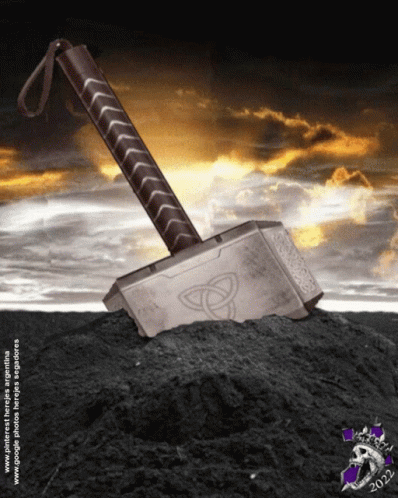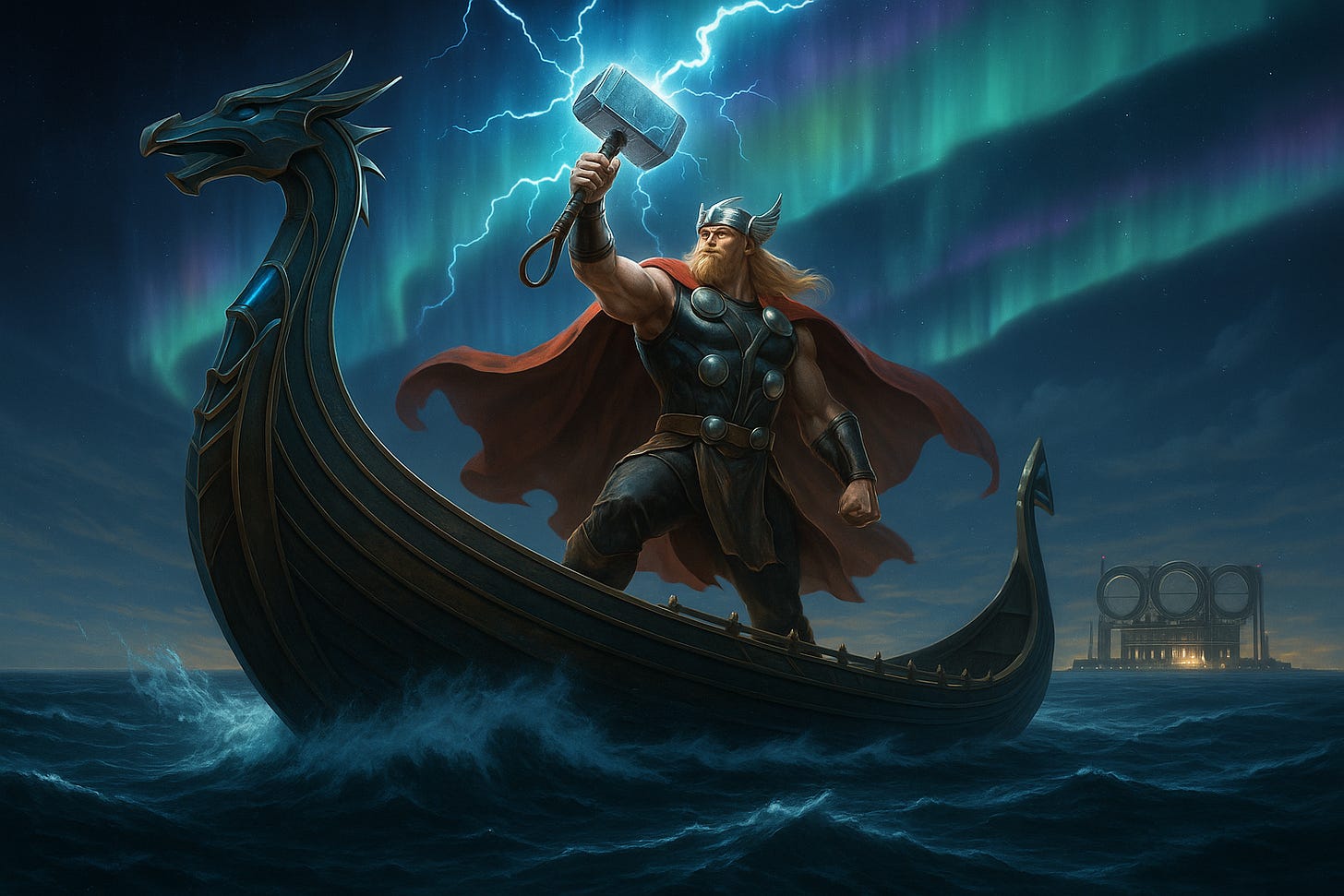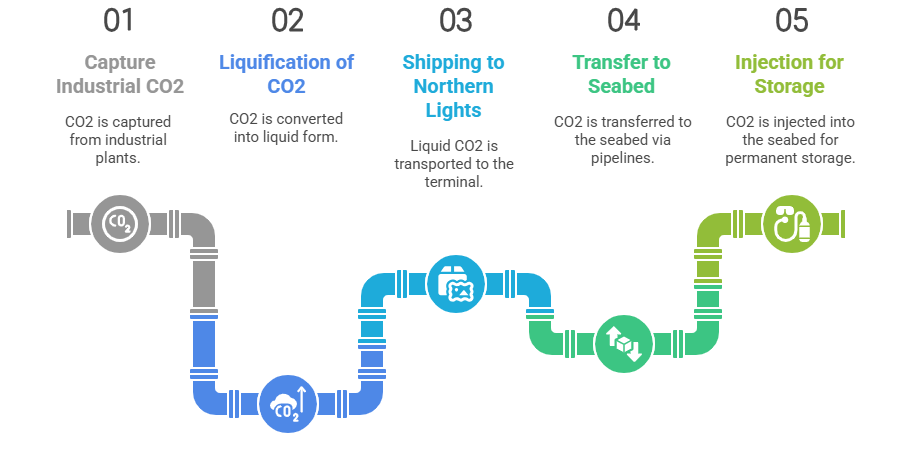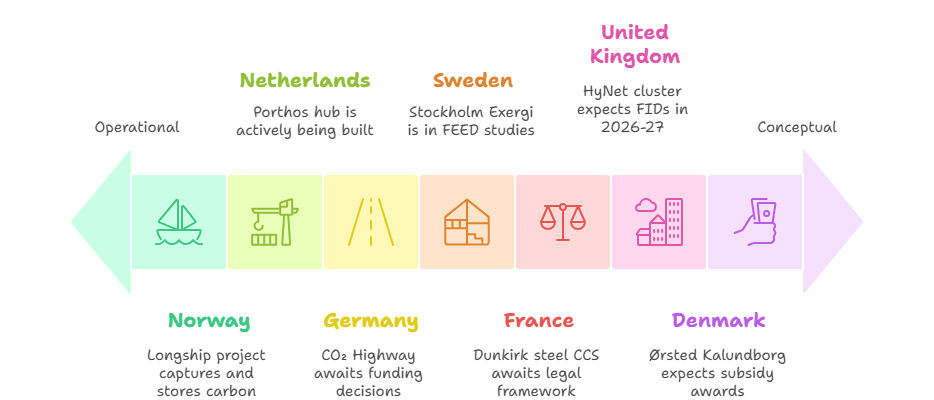$1.5 Billion, the North Sea and Norway's Carbon Gambit to Lead Europe
Norway wants money, power and lots of carbon
Climate change is reshaping power, money and markets. I help you stay on top of it!
Hey there👋
In this edition:
How Norway is using its “carbon vault” under the North Sea to rewrite Europe’s climate strategy
Why a $1.5B bet could ignite a race to lead the future of European energy independence
What this means for investors, startups, and anyone who cares about the future of energy
You should read this if you’re…
Curious about the future of mega infrastructure projects
Interested in how Norway is shaking up Europe’s energy and climate strategy
Following the geopolitics of Europe, including why more countries might step up soon to defend Norway against Russia
Last time, we discussed how Sweden is quietly walking away from its stellar climate heritage, and we have highlighted the growing rift between the EU and its countries. This time, we’ll set our sights to Sweden’s neighbor, Norway, who is not trying to avoid the climate crisis, but facing it directly through infrastructure investments.
In short, Norway saw an opportunity to save the planet and make some money in the process, and it’s hitting the hammer on its head.
Let’s hop on board Norway's LongShip project in a journey towards the Northern Lights and its quest to make some money from the belly of the North Sea.
1. Norway is in the carbon business now🤠
Imagine you’re along Norway’s coast, facing the North Sea. Take a deep breath. What do you smell?
Is it Iodine? Is it the smell of fresh fish? Is it the smell of adventure, calling you to join Odin in his hall in Valhalla?
Nope. It’s money. You smell money.
At least, that’s what Norway smelled, as it announced two marquee projects for carbon capture: LongShip and Northern Lights.
I recently discovered this gargantuan, Norwegian-funded program, one of the world’s first large-scale carbon capture value chains via a New York Times profile.
Longship is the name given for the entire program, which includes:
Capture Industrial CO2 from (1) the Heidelberg Materials cement plant and (2) the Hafslund Celsio waste-to-energy plant
Liquification of CO2 and shipping to the Northern Lights Receiving Terminal (in (Øygarden, Vestland)
Transfer from the terminal to a site in the North Sea’s seabed (at 300m depth) through subsea pipelines
Injection of liquified CO2 down 2,600m below the sea bed for permanent storage
In its current phase, LongShip is designed to store ~1.5 million tons of CO2 annually. Although it’s not nearly what we need to save the planet, it’s still quite a lot.
Northern Lights is also the world’s first open-access carbon storage service: any company can ship and store emissions here. By 2028, the project aims to store up to 5 million tons of CO₂ per year.
While LongShip is mostly funded by the Norwegian government, Northern Lights is a partnership between Equinor, Shell, and TotalEnergies.
As of last week, Northern Lights is operational.
Who’s funding all of this? Mostly, it’s Norway, to the tune of $1.7 billion, while the three musketeers of Norther Lights committed ~$700 million for phase 2 expansion.
Norway is not the only country in the world to fund large-scale carbon capture projects, with the UK, Netherlands, Canada and Japan (and others) are working on their own versions.
It’s just that Norway is the first to have one up and running.
2. Make Europe Clean Again
LongShip and Northern Lights are only a piece of a much larger puzzle frequently featured on this blog substack, and that is Europe’s efforts to decarbonize and reduce its emissions by 2040.
True, Norway is not a part of the EU, but is a part of the European Economic Area, making it an important part of the region’s push towards net zero emissions.
As Europe struggles with decarbonization, Norway is going all in, backing the full value chain itself.
LongShip can be understood against a series of moves by different European countries to stand up national programs to decarbonize (that often run counter to their tendency to flaunt their own emissions targets). Examples include Hungary’s EV Hub ambitions, Italy’s Direct Reduced Iron facility and others
Most countries use subsidies, grants and tax incentives to encourage the private sector to act.
Norway, on the other hand, said:
Norway essentially pioneered a new approach for other European countries, effectively underwriting the entire project.
LongShip can be thought of as a blueprint for broader decarbonization projects across Europe, and as the start of a national strategy that rests on carbon capture.
If LongShip is so great for Europe, one question remains: What does Norway get out of it?
Put simply: Money, and power.
3. Yeah, There’s a Lot of Money in That
The first thing Norway gets out of LongShip is money.
In the short term, as counterintuitive as it may sound given Norway spent ~$1.7 billion on the project, there’s plenty of more kroner to be made:
Taxes and tariffs: Corporate taxes, indirect taxes, royalties, shipping tariffs and other forms of fees
67% stake in Equinor, an equal partner in Northern Lights. The revenue comes from charging for shipping passes
In the long term, Norway is betting on carbon capture as industrial policy. According to the Norwegian government’s rationale, LongShip will catalyze a new industry and will bring carbon capture costs down significantly:
“Through Longship, the Government will strengthen Norwegian industry by enabling enterprises to meet the climate requirements of the future. The project is an important contribution to green growth and will secure and create new jobs in the industry”
Of course, like all bets it may fail. Industrial carbon capture did not become cheaper in the last 40 years, and there are many voices skeptical of its economic viability. Today, much of the field is dependent on government subsidies, and LongShip is no different.
Still, Norway remains bullish on LongShip and Northern Lights. They may be what Norway (and Europe) needs to decarbonize hard-to-abate industries, the focus of the two projects.
Finally, there’s another angle to consider here: Norway is trying to diversify its economy, weening off of fossil fuel riches. LongShip is one more way it is trying to do so, considering it a platform to generate more downstream opportunities in the form of technology and expertise exports, a benefit captured by leadership.
4. Geo-Flexing & the Future of Europe
Speaking of leadership… Another benefit stemming from LongShip is not entirely financial, but rather geopolitical.
LongShip is Europe (and the world’s) first fully operational project of its kind, surpassing other European countries’ projects. This first mover advantage gives Norway geopolitical capital and helps position itself as a decarbonization leader at a time when the EU is trying to get serious on cutting emissions.
LongShip gives Norway a seat at the big kids table:
Makes Norway a climate gateway for Europe
Gives Norway a leadership role in the continent’s energy transition
Positions Norwegian infrastructure as a real alternative to Russian energy routes
Strengthens economic and defensive alliances in Europe
Makes Norway a country worth protecting, by virtue of its important infrastructure. In a world dominated by fears of Russian aggression, this alone is worth the bother
So what does this mean for the future? We might see…
Norway becoming more important in European politics
Additional development to increase influence
More calls by European leaders to defend Norway and its infrastructure
A reshuffle of European politics to account for more power for Norway over other countries
5. Ok… Who should care?
Obviously, there are a lot of folks who should care deeply about Longship. It shows how the world really works and how countries are using climate infrastructure to flex their geopolitical muscles.
But If you’re…
Living on this Planet: Get used to paying the bill (taxes). On the other hand, these projects might pioneer the next wave of jobs and perhaps make our lives better in the long run.
An Investor: There’s a lot of money for you. These large infrastructure programs are large, and Norway is open for business. Many others are likely to follow suit (not investment advice; more like a taunt).
A Startup: There’s a wealth of opportunities. Think big: carbon monitoring, leak detection, supply chain optimization. The list is endless!
Other Countries in Europe: You might have to pay dues to Norway in the future, and you can expect it to collect, and then some! (or… build faster!)
Russia: I’d be concerned. Europe might be able to break free and use Norway’s infrastructure to supply its energy needs.
That’s it for this week.
As always, stay tuned to Saturday’s edition of “The Time Machine”, where I tell you what things you should care about this week. As a reminder, I’m still tweaking this newsletter, so if you have suggestions - hit me up!
See you on Saturday, and next week with a brand new take!
Don’t forget to subscribe 🔽
And if you have any comments, thoughts or suggestions, I’d love to hear from you in the comments (I also need the traffic 🤷♂️)









